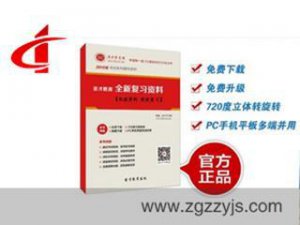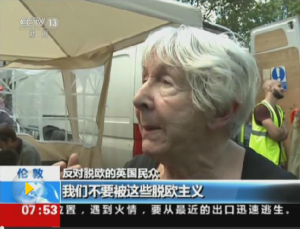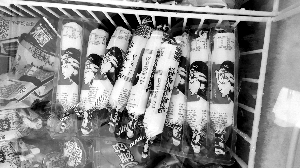|
The Similar And Different Regulations On Industrial Designs Between China And Canada He Zijing Abstract: With China entering WTO, more and more Chinese industrial designers want to apply internationally to register their designs outside China. This paper shows you the detailed comparison about regulations concerning industrial designs between China and Canada, gives some suggestions about the process to register internationally to protect Chinese applier. Some hints imposed on the difference between the two countries will help to improve our patent law. KEYWORDS: Industrial design, China, Canada 1. General introduction on industrial designs 1.1 What is an industrial design? 1.1.1 Of WIPO An industrial design is the ornamental of aesthetic aspect of an article. The design may consist of three-dimensional features, such as the shape or surface of an article, or of two-dimensional features, such as patterns, lines or color. Industrial designs are applied to a wide variety of products of industry and handicraft. To be protected under most national laws, an industrial design must appeal to the eye. This means that an industrial design is primarily of an aesthetic nature, and does not protect any technical features of the article to which it is applied. 1.1.2 Of CHINA Design in the Patent Law means any new design of the shape, the pattern or their combination, or the combination of the color with shape or pattern, of a product with creates an aesthetic feeling and it fits for industrial application. 1.1.3 Of CANADA Design of industrial design means features of shape, configuration, pattern or ornament and any combination of those features that, in a finished article, appeal to and are judged solely by the eye. 1.2 Other forms of Intellectual Property In China, Intellectual property can be generally classified as patent, copyright, trademark. Patents, or in other words, inventions-creations, mean inventions, utility models and designs. So that the designs are one of the subdivisions of patents. Whereas, in Canada, in addition to industrial designs, there other forms of intellectual property, as patents, copyrights, and integrated circuit topographies. Hereby, patents cover new inventions (process, machine, manufacture, composition of matter), or any new and useful improvement of an existing invention. So that industrial designs have the equal statues to patents, as one of the subdivisions of intellectual property. 1.3 Why protect industrial designs? Industrial designs are what make an article attractive and appealing; hence, they add to the commercial value of a product and increase its marketability. When an industrial design is protected, the owner-the person or entity that has registered the design-is assured an exclusive right against unauthorized copying or imitation of the design by third parties. This helps to ensure a fair return on investment. An effective system of protection also benefits consumers and the public at large, by promoting fair competition and honest trade practices, encouraging creativity, and promoting more aesthetically attractive product. Protecting industrial designs helps economic development, by encouraging creativity in the industrial and manufacturing sectors, as well as in the traditional arts and crafts. They contribute to the expansion of commercial activities and the export of national products. Industrial designs can be relatively simple and inexpensive to develop and protect. They are reasonably accessible to small and medium-sized enterprises as well as to individual artists and craftsmen, in both industrialized and developing countries. 1.4 How can industrial designs be protected? In most countries, an industrial design must be registered in order to be protected under Industrial Design Law. As for China, the regulations on design are under the Patent Law of People’s Republic of China (PRC) and its implementing regulations; As for Canada, The Industrial Design Act and Industrial Design Regulations details the regulations that govern design rights. As a general rule, to be registerable, the design must be “new” or “original”. Different countries have varying definitions of such terms, as well as variations in the registration process itself. Generally, “new” means that no identical or very similar design is known to have existed before. Depending on the particular national law and the kind of design, an industrial design may also be protected as a work of art under copyright. 2.The main difference concerning registration 2.1 When to file an application There is no time limit for filing an application as long as the design had never been published. The term “published” means that the design has been made public (even to your neighbors) or offered for commercial sale or use anywhere in the world. It is best to file an quickly as possible if publication has occurred. In china, an design application does not lose its novelty where, within six months before the date of filing, one of the following events occurred: [1] where it was first exhibited at an international exhibition sponsored of recognized by the Chinese Government;[2]where it was first made public at a prescribed academic or technological meeting;[3]when it was disclosed by any person without the consent of the applicant. In Canada, the design shall be refused to be registered if the application is filed more than one year after the publication of the design in Canada of somewhere. 2.2 who can apply? Only the proprietor of a design may apply for and obtain registration for an industrial design both in China and Canada, while there exists little difference between the two countries on the question that who can be defined as proprietor.[1] usually you are considered the proprietor if you have created the design;[2] if you work together with other person to creat a design, you should file for registration as joint proprietors ( unless you are all working under contract or commission );[3] if you have acquired ownership of a design, then you may apply;[4] if you are employee of a company and develop design as part of your employment, then the employer may be the proprietor. In that case, only the employer may apply in Canada; while in china, the entity and the inventor or creator may enter into a contract in which the right to apply for and own the exclusive right is provided for;[5] if you have been hired under contract to develop design for someone else, then that person is the proprietor and is the only one entitled to apply for registration in Canada; whereas in that case in China, the right to apply for registration belongs, unless otherwise agreed upon, to the entity or individual that made the design. 2.3 What requirements to make designs registerable? In Canada, the minister shall register the design if the minister finds that it is not identical with or dose not so closely resemble any other design already registered as to be confounded therewith, and shall return to the proprietor thereof the drawing or photograph and description with the certificate required. In China, any design for which patent fight may be granted must not be identical with and similar to any design which, before the date of falling has been publicly disclosed in publications in the country or abroad or has been publicly used in the country, and must not be in conflict with any prior right of any other person. 2.4 What you cannot register? In Canada, you cannot register the following under the Industrial Design Act: [1] Designs that are utilitarian only and which are not intended to provide visual appeal; [2] Designs that have no fixed appearance; [3] Designs for components that are not clearly visible; [4] a method of construction; [5] an idea; [6] materials used in the construction of an article; [7] the useful function of the article; or [8] color. In China, for any of the following, no patent right shall be granted: [1] scientific discoveries;[2] rules and methods for mental activities;[3] methods for diagnoses or for the treatment for the diseases;[4] animal and plant varieties;[5] substances obtained by means of nuclear transformation. From the above regulations, we can see that the Chinese regulations is more generic for all of the three types of creation-inventions; and the Canadian’s is more special in detail on designs. So we should absorb some of them in our implementing regulations of patent law. 2.5 searching of office record prior to filing an application Prior to filing an application, you may wish to conduct a search of office records in order to better determine whether your design is truly new and original. This will give you the opportunity to see other registered designs. You should also keep your design confidential. 2.6 How long the process takes? In Canada, the Office dose not register any design until six months after the date of filing. Normally it takes between eight and twelve months to have your application examined. While in china, there is no such kind of provisions concerning the term of process of designs. 2.7 Duration of protection Both in the two countries, duration of protection of industrial designs is for ten-year term, while the beginning date is quite different. In Canada, it is the date of registration-usually six months after the date of filing; in china, it is the date of filing. Once the ten-year term has expired, anyone is free to make, import, rent or sell etc., the designs. 2.8 Extension of protection In Canada, your application must include a description which identifies the features that constitute the design since the court may use your description to help determine the limits of protection for your design, you should word your description with care and precision. If your description is too broad, you may over-extend the scope of the design, and it may be impossible to enforce. If it is too narrow, you may limit the scope of the design or leave out features that you intended to protect. 总共2页 1 [2] |









